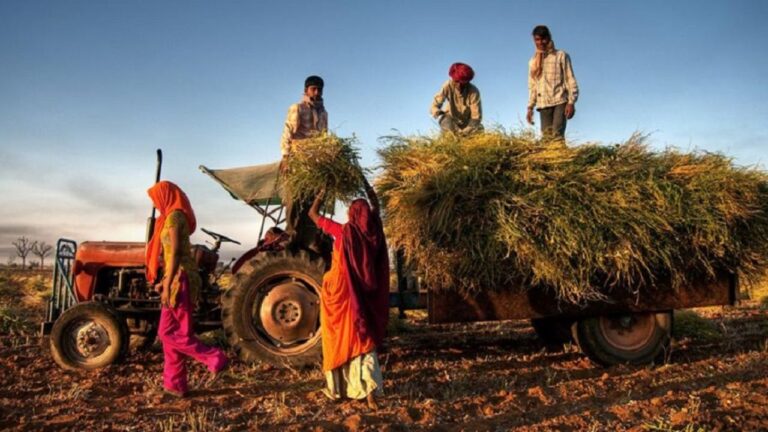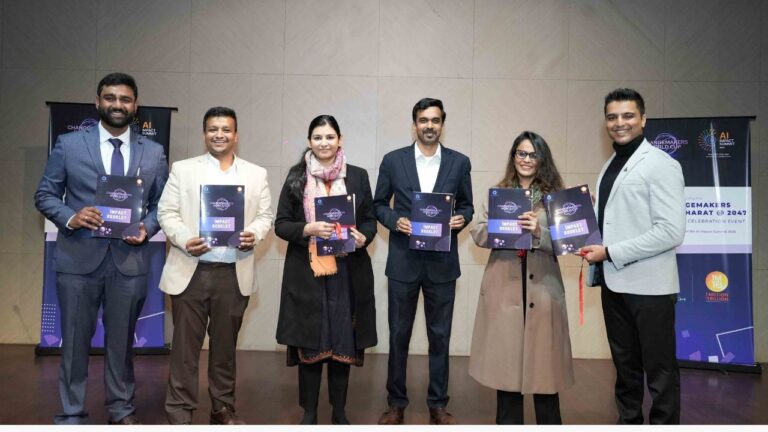
Monsoon is pivotal for India’s $572 billion (by Gross Value Added as of 2022) agrarian economy. It sustains a source of livelihood for nearly 150 million workers (a tad higher than Russia’s population), and hence by extension, is a mainstay of India’s $3.5 trillion economy (as of 2022). Currently, around 55% of the net sown area is rain-dependent, thus making a timely onset and deliverance of monsoon critical to India’s underlying economic strength.
As India’s farming communities gaze into the scorching summer skies in search for rain clouds, there is much to cheer. The India Meteorological Department (IMD) has forecasted an ‘above-normal’ monsoon this season, with rainfall expected at 106% of the long-term average of 87 cm. This augurs well for the upcoming Kharif season.
A significantly higher water intensive sowing season as compared to its counterpart Rabi, Kharif is characterized by major crops, such as rice, corn, cotton, soybeans, groundnut, and sugarcane. Barring corn, India ranks among the top five producers in each of these crops, making it a global leader in food and resource security.
Today almost 115 million hectares or 55% of India’s gross sown area is irrigated. This implies that the rest of sown area (and a little more) is dependent on seasonal rainfall. Especially, considering the water intensity of Kharif and better production, Ashish Dobhal, CEO of UPL SAS, recommends a set of sustainable practices using better water management techniques to irrigate the Kharif crops.
Weather Data Utilization: One of the most promising approaches is the integration of weather data into irrigation practices. By utilizing historical and real-time weather information, including rainfall and temperature patterns, farmers can make informed decisions about when and how much to irrigate their crops. Technology platforms provide detailed insights into accumulated and daily rainfall, helping farmers anticipate dry spells or heavy rain events and adjust their irrigation schedules, thus reducing the risk of water stress or waterlogging.
Rainwater Harvesting: It is another valuable technique for farmers to collect and store rainwater during the monsoon season in ponds, tanks, and other storage structures, creating a reliable water source for dry periods. This stored rainwater can be used during critical growth stages when water demand is high, ensuring consistent hydration throughout the crop’s growth cycle.
Sub-Surface Drip Irrigation Systems: For enhanced productivity, profitability, and sustainable water use, sub-surface drip irrigation (SDI) systems offer an efficient solution, particularly for crops like cotton, maize, and wheat. By placing the water delivery system below the soil surface, SDI directly irrigates the root zone, minimizing evaporation and runoff losses.
Smart Water Management Systems: Integrating Smart water management systems, integrating meters and Internet of Things (IoT) devices, are revolutionizing the way farmers monitor and control water usage. Real-time data collection and analysis enable precise water distribution, reducing losses due to leakage or inefficiency, and informing better water management decisions.
Technology Integration: Innovative technologies like Zeba, a climate-smart solution, are also making waves in the agricultural sector. Zeba helps retain moisture in the soil, reducing the need for frequent irrigation. This technology is particularly effective for water-intensive crops like sugarcane and groundnuts, as it absorbs water and releases it slowly, ensuring a steady water supply even during dry periods.
Drones and Satellite Imagery: Drones and satellite imagery provide farmers with valuable insights into crop health and soil moisture levels, allowing for data-driven decisions on irrigation schedules and water requirements. By ensuring efficient water usage while maintaining optimal crop hydration, these technologies are contributing to sustainable farming practices.
Adaptive Management Practices: Additionally, encouraging farmers to adapt their planting schedules and crop management practices based on water availability and climate forecasts can significantly enhance water use efficiency. This includes shifting sowing dates and adjusting crop rotations to better align with expected rainfall patterns, optimizing the use of available water resources.
Projection indicates that by 2030, agriculture could contribute a whopping $600 billion to India’s GDP— that is an increase of 50 percent over its contribution in 2020. While it is achievable, the efficiency of agricultural activity is critical. Currently India’s water usage per tonne of crop production exceeds twice as much as that in developed countries.
As the world grapples with the challenges of climate change and water scarcity, these innovative water management techniques offer hope for a more sustainable future in agriculture. By adopting a combination of these methods tailored to their specific needs, farmers can achieve higher water use efficiency, lower costs, and sustainable crop production, ensuring food security for generations to come.





